Film Streaming
The Iris & B. Gerald Cantor Film Center: A Hub for Filmmakers and Enthusiasts Alike

The Iris & B. Gerald Cantor Film Center: A Hub for Filmmakers and Enthusiasts Alike, nestled within the heart of New York City, the Iris & B. Gerald Cantor Film Center stands as a beacon for filmmakers, students, and cinema enthusiasts. It is more than just a venue for screenings—it’s a cultural institution that brings together diverse perspectives and fosters a deep appreciation for the cinematic arts. But what exactly makes this film center so significant? Let’s explore its history, offerings, and the impact it has had on New York’s vibrant film community.
A Rich History Steeped in Philanthropy
The Iris & B. Gerald Cantor Film Center owes its existence to the generosity of philanthropists Iris and B. Gerald Cantor. Their contributions to the arts, particularly in the realms of film and sculpture, have left a lasting legacy. The Cantors were known for their commitment to enriching cultural institutions and supporting emerging artists. This center, a part of New York University’s Tisch School of the Arts, is a testament to their enduring impact on the arts community.
Opened in the late 1990s, the Cantor Film Center quickly became an integral part of NYU’s campus and the broader New York film scene. It was designed to be a space where students could not only showcase their work but also learn from the professionals shaping the film industry. Over the years, it has hosted countless events, screenings, and discussions, making it a pivotal location for those passionate about cinema.
State-of-the-Art Facilities and Resources
One of the key features that sets the Iris & B. Gerald Cantor Film Center apart is its state-of-the-art facilities. The center boasts several screening rooms, each equipped with the latest in projection technology and sound systems. These rooms are designed to provide an optimal viewing experience, whether for a small, intimate screening or a larger public event. The attention to detail in the design and technology ensures that every film shown at the center is presented in the best possible way.
In addition to the screening rooms, the center offers resources for film students and professionals alike. Editing suites, sound studios, and other production facilities are available, providing a comprehensive environment for creating and refining cinematic works. These resources make the Cantor Film Center not just a place to watch films, but a place to make them.
An Educational Epicenter for Aspiring Filmmakers
Education is at the heart of the Iris & B. Gerald Cantor Film Center‘s mission. As part of NYU’s Tisch School of the Arts, it plays a crucial role in the education of future filmmakers. The center hosts a variety of classes, workshops, and seminars aimed at developing students’ skills in all aspects of filmmaking. From screenwriting and directing to editing and sound design, students have access to a wealth of knowledge and expertise.
Moreover, the Cantor Film Center regularly brings in guest lecturers and industry professionals. These events provide students with the opportunity to learn from those who are actively working in the film industry. The insights gained from these sessions are invaluable, offering real-world perspectives that complement the theoretical knowledge gained in the classroom.
A Venue for Premieres and Festivals
The Iris & B. Gerald Cantor Film Center is not just an educational facility; it also serves as a premier venue for film festivals and premieres. Throughout the year, the center hosts a variety of events that attract filmmakers and audiences from around the world. For instance, these events range from student showcases to international film festivals, establishing the center as a vibrant hub for film culture in New York City.
Furthermore, one of the most notable events held at the center is the Fusion Film Festival, which celebrates women in film and television. This festival not only highlights the work of female filmmakers but also provides a platform for discussions on gender equality in the industry. By supporting such initiatives, the Cantor Film Center reflects its commitment to diversity and inclusion in the arts.
Fostering a Community of Film Enthusiasts
The Iris & B. Gerald Cantor Film Center is more than just a physical space—it’s a community. The center fosters a sense of camaraderie among students, faculty, and film enthusiasts. Regular screenings, panel discussions, and networking events create opportunities for people to connect and share their passion for cinema. This community aspect is one of the center’s most valuable assets, as it helps to build lasting relationships that extend beyond the classroom.
Whether you’re a seasoned filmmaker or someone who simply loves movies, the Cantor Film Center offers something for everyone. It’s a place where ideas are exchanged, collaborations are formed, and creativity is nurtured. The welcoming atmosphere makes it an ideal place to engage with the art of film, whether through watching or creating.
Supporting Emerging Voices in Film
In line with its mission to support new talent, the Iris & B. Gerald Cantor Film Center places a strong emphasis on showcasing the work of emerging filmmakers. To this end, student films are regularly screened, providing these young artists with a valuable platform to present their work to the public. Additionally, these screenings are often accompanied by Q&A sessions, where filmmakers can discuss their creative process and receive feedback from the audience.
The center also partners with organizations and festivals that focus on up-and-coming filmmakers. These partnerships help to amplify the voices of new artists and provide them with the exposure they need to advance their careers. The Cantor Film Center‘s dedication to supporting emerging talent is a testament to its role as a nurturing ground for the next generation of filmmakers.
A Catalyst for Social Change Through Film
Film has always been a powerful medium for social change, and the Iris & B. Gerald Cantor Film Center recognizes this potential. Consequently, the center frequently hosts screenings and events that address pressing social issues, using film as a tool to spark conversation and inspire action. For example, from documentaries on climate change to films exploring issues of race and identity, the Cantor Film Center is at the forefront of using cinema to address the world’s most urgent challenges.
Moreover, these socially-conscious events are often accompanied by discussions, panels, or workshops that delve deeper into the topics presented on screen. By providing a space for these critical conversations, the Cantor Film Center not only encourages its audience to think critically about the world around them but also inspires them to consider how they can contribute to positive change.
Preserving the Legacy of Film
Another important aspect of the Iris & B. Gerald Cantor Film Center is its commitment to preserving the legacy of film. To achieve this, the center regularly hosts retrospectives and screenings of classic films, thereby ensuring that new generations of filmmakers and audiences can appreciate the rich history of cinema. Additionally, these events often feature discussions with historians, critics, or even the filmmakers themselves, thus offering valuable context and insights into the films being shown.
In addition to screening classic films, the Cantor Film Center also plays a role in preserving independent and experimental cinema. These genres, which often struggle to find mainstream distribution, find a home at the center. By supporting these forms of cinema, the Cantor Film Center ensures that a diverse range of voices and perspectives continue to be represented in the film industry.
A Space for Innovation and Experimentation
Innovation is key to the evolution of film, and the Iris & B. Gerald Cantor Film Center is a place where new ideas are born and tested. The center encourages experimentation in filmmaking, whether through its support of independent films or the resources it provides to students. This spirit of innovation is evident in the variety of films shown at the center, which range from traditional narratives to avant-garde and experimental works.
The Cantor Film Center is particularly supportive of films that push the boundaries of the medium. Whether through new storytelling techniques, innovative uses of technology, or challenging themes, the center provides a platform for films that are breaking new ground. This commitment to innovation makes the Cantor Film Center a vital part of New York’s film ecosystem, continually pushing the industry forward.
The Cantor Film Center’s Role in New York’s Cultural Landscape
New York City is one of the world’s great cultural capitals, and the Iris & B. Gerald Cantor Film Center plays a key role in its vibrant arts scene. In particular, the center’s contributions to the city’s cultural landscape are substantial. For instance, it hosts major film events and supports the education of future filmmakers. Consequently, its presence in New York not only enhances the city’s reputation as a global hub for film and the arts but also underscores its ongoing influence in shaping the cultural discourse.
Moreover, the Cantor Film Center‘s location within NYU places it at the intersection of academia and industry. This unique position allows the center to draw from the best of both worlds, offering a space where theoretical knowledge meets practical application. The result is a dynamic environment that contributes to the richness and diversity of New York’s cultural offerings.
Looking to the Future
As the Iris & B. Gerald Cantor Film Center looks to the future, its mission remains clear: to support and celebrate the art of filmmaking in all its forms. Moreover, the center continues to evolve, adapting to the changing needs of the film industry and the communities it serves. With its ongoing commitment to education, innovation, and community engagement, the Cantor Film Center is well-positioned to remain a vital part of New York’s film scene for years to come.
In the coming years, we can expect the Cantor Film Center to further expand its programming and resources, continuing to provide a space where filmmakers and audiences can come together to explore the art and impact of cinema. Whether through new partnerships, cutting-edge technology, or groundbreaking films, the center will undoubtedly continue to play a leading role in shaping the future of film.
Iris & B. Gerald Cantor Film Center: A Treasure in New York
The Iris & B. Gerald Cantor Film Center is much more than a screening venue—it’s a cornerstone of New York’s film culture, a hub for education, innovation, and community. Its contributions to the film industry, both locally and globally, are immeasurable. For anyone with a passion for film, whether as a creator or a viewer, the Cantor Film Center offers a place to connect, learn, and be inspired.
FAQs
What is the Iris & B. Gerald Cantor Film Center known for?
The Iris & B. Gerald Cantor Film Center is known for its state-of-the-art screening facilities, educational programs for aspiring filmmakers, and its role as a venue for major film events in New York City.
Where is the Iris & B. Gerald Cantor Film Center located?
The Iris & B. Gerald Cantor Film Center is located within New York University’s Tisch School of the Arts, in the heart of New York City.
What kind of events does the Iris & B. Gerald Cantor Film Center host?
The center hosts a variety of events, including film premieres, festivals, student showcases, and discussions with industry professionals.
Who founded the Iris & B. Gerald Cantor Film Center?
Iris and B. Gerald Cantor, renowned for their significant contributions to the arts, established the film center through their philanthropy.
How does the Iris & B. Gerald Cantor Film Center support emerging filmmakers?
The center supports emerging filmmakers by providing them with resources such as editing suites, screening opportunities, and partnerships with film festivals.
What makes the Iris & B. Gerald Cantor Film Center unique?
Its combination of cutting-edge facilities, educational programs, and community engagement, along with its location in New York City, makes the Cantor Film Center a unique and influential institution in the film world.
Film Streaming
Saving Private Ryan 25th Anniversary Film Showtimes: Honoring a Cinematic Masterpiece
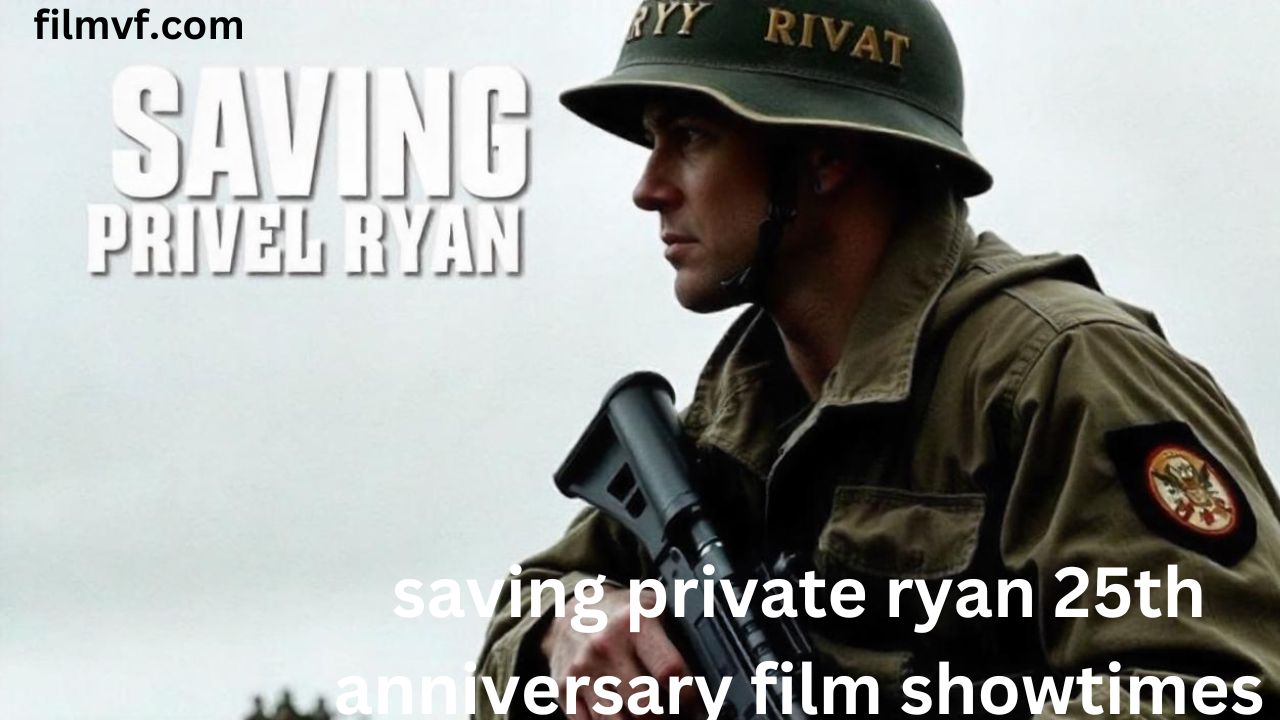
Saving Private Ryan 25th Anniversary Film Showtimes. The 25th anniversary of Saving Private Ryan brings an opportunity to revisit one of cinema’s most powerful war films. As theaters across the country announce special showtimes, audiences prepare to relive its emotional impact. These anniversary screenings honor the legacy of Steven Spielberg’s epic and remind viewers of its timeless themes. With an immersive theater experience, fans can appreciate its artistry like never before.
A Look Back at Saving Private Ryan’s Legacy
Released in 1998, Saving Private Ryan set a new standard for war films with its unflinching portrayal of World War II. Directed by Steven Spielberg and written by Robert Rodat, the film combined stunning realism with deeply emotional storytelling. Tom Hanks led an incredible ensemble cast, bringing authenticity to the unforgettable characters.
The movie’s opening sequence at Omaha Beach redefined how filmmakers approached war scenes. Spielberg’s use of handheld cameras and graphic imagery placed viewers directly in the chaos. Audiences left theaters moved, shaken, and in awe of its brilliance.
Why the 25th Anniversary Matters
Celebrating the 25th anniversary allows fans and new audiences to experience Saving Private Ryan on the big screen once again. Special showtimes provide a chance to reflect on its cultural and historical significance. This milestone also highlights how the film reshaped Hollywood’s approach to war narratives.
Moreover, these screenings remind us why Saving Private Ryan earned critical acclaim, including five Academy Awards. Its influence remains visible in countless films that followed, making the anniversary a cultural event worth commemorating.
Special 25th Anniversary Screenings and Showtimes
Cinemas nationwide are hosting exclusive showtimes for Saving Private Ryan’s 25th anniversary. These events range from limited single-day screenings to weekend showcases. Theaters are pairing the film with behind-the-scenes footage, director interviews, and other bonus features.
Major chains like AMC and Regal are joining smaller local theaters in this celebration. For those unable to attend in person, streaming platforms may also offer curated anniversary editions. Check local listings to secure tickets and enjoy this epic masterpiece in its full glory.
The Cast That Made History
Tom Hanks delivered one of his most iconic performances as Captain John Miller, leading a cast filled with immense talent. Supporting actors like Matt Damon, Edward Burns, and Giovanni Ribisi brought depth to the ensemble. Together, their performances elevated the story, making it more than just another war movie.
25 years later, the cast remains a major draw for fans. The anniversary showtimes serve as a reminder of how these actors brought humanity to their roles.
Behind-the-Scenes Secrets to Celebrate
Fans attending anniversary screenings will gain new insights into the making of Saving Private Ryan. The film’s incredible realism resulted from painstaking attention to detail by the filmmakers. For instance, Spielberg insisted on authentic uniforms and equipment to recreate World War II accurately.
Moreover, the cast underwent rigorous boot camp training to embody the physical and emotional struggles of soldiers. Learning these behind-the-scenes details enhances appreciation for the artistry involved.
Impact on War Films Over 25 Years
Saving Private Ryan redefined the war film genre by focusing on raw emotion and unflinching authenticity. Its success paved the way for films like Black Hawk Down and 1917, which adopted similar techniques.
Television series like Band of Brothers also drew inspiration from Spielberg’s masterpiece. By setting a high standard, Saving Private Ryan remains the gold standard for filmmakers tackling historical warfare.
Themes That Still Resonate Today
The film’s themes of sacrifice, duty, and brotherhood continue to strike a chord with audiences worldwide. As veterans share stories of service, Saving Private Ryan becomes a bridge between history and modern viewers.
The 25th anniversary showtimes offer an opportunity to reflect on these themes. Watching the film in theaters reminds audiences of the cost of freedom and the humanity found in conflict.
The Cinematic Experience: Why Theaters Matter
Experiencing Saving Private Ryan on the big screen brings unparalleled emotional intensity. Spielberg’s direction, John Williams’ iconic score, and Janusz Kamiński’s cinematography come to life in a way streaming cannot replicate.
Anniversary screenings allow audiences to rediscover the movie’s power. As the sound of bullets and explosions fills the theater, viewers feel immersed in its world.
What Makes Saving Private Ryan Timeless
Despite advances in filmmaking, few movies match the emotional depth of Saving Private Ryan. Its ability to balance epic battles with intimate moments sets it apart.
The characters’ vulnerabilities and moral dilemmas resonate across generations. These elements ensure the film remains relevant, making the 25th anniversary screenings more impactful.
A Celebration for New Generations
For younger viewers unfamiliar with Saving Private Ryan, the 25th anniversary provides a perfect introduction. Experiencing the movie in theaters allows them to connect with its historical importance.
Parents and educators can use this opportunity to discuss the realities of war and the lessons it offers. By sharing this cinematic masterpiece, new generations can better understand the sacrifices of past heroes.
Revisiting the Omaha Beach Scene
The Omaha Beach sequence has become one of the most iconic moments in film history. It captures the terror and chaos of D-Day with unparalleled intensity.
During anniversary screenings, audiences can relive this harrowing sequence as it was meant to be seen. The scene’s emotional weight and technical brilliance continue to amaze, even after 25 years.
Celebrating Spielberg’s Vision
Steven Spielberg’s vision for Saving Private Ryan remains a testament to his genius as a filmmaker. His ability to blend realism with storytelling created an unforgettable experience.
The 25th anniversary honors his dedication to capturing the humanity within war’s horrors. Watching the film again highlights Spielberg’s impact on cinema and storytelling.
How to Find Showtimes Near You
Finding showtimes for Saving Private Ryan’s 25th anniversary screenings is simple. Visit popular cinema chains like AMC or check online platforms for local listings.
Many theaters offer advanced ticket bookings, ensuring fans can secure their seats early. Additionally, streaming platforms may announce special editions for those unable to attend in person.
Celebrating with Friends and Family
Anniversary screenings create a unique opportunity to share Saving Private Ryan with loved ones. Watching the film together sparks conversations about its themes and impact.
Families attending the screenings often find themselves reflecting on the sacrifices of past generations. This shared experience deepens the emotional connection to the film’s message.
Saving Private Ryan 25th Anniversary Film Showtimes
Why You Shouldn’t Miss This Celebration
Missing the 25th anniversary screenings means losing a rare opportunity to see Saving Private Ryan in its intended format. These special showtimes remind audiences why it became a cultural phenomenon.
By attending, fans not only honor the film but also support its enduring message of sacrifice and unity.
Frequently Asked Questions
Where can I watch Saving Private Ryan for its 25th anniversary?
You can find anniversary screenings at major theater chains like AMC and Regal or check local listings for nearby options.
Will streaming platforms offer the film’s 25th anniversary edition?
While some platforms may announce special editions, theaters remain the best option for experiencing this cinematic masterpiece.
Why is Saving Private Ryan being re-released for its 25th anniversary?
The re-release celebrates the film’s cultural impact and allows audiences to experience it on the big screen again.
What should I expect from anniversary screenings?
Anniversary showtimes may include bonus features like behind-the-scenes footage, director interviews, and exclusive content.
How has Saving Private Ryan influenced other war films?
The film’s realistic portrayal of war inspired subsequent movies and series, setting a high standard for authenticity and storytelling.
Why is the Omaha Beach sequence so famous?
The sequence captures the chaos of D-Day with unmatched realism, making it one of the most iconic moments in cinema history.
Conclusion
The 25th anniversary of Saving Private Ryan provides a rare chance to celebrate one of cinema’s most influential war films. Special showtimes honor its timeless message of sacrifice, duty, and courage while reconnecting audiences with its unparalleled artistry. Don’t miss the opportunity to relive this masterpiece in theaters, where its emotional power shines brightest.
Saving Private Ryan 25th Anniversary Film Showtimes
Film Streaming
The Kodak Pony 135 Film Camera: A Timeless Classic in 35mm Photography
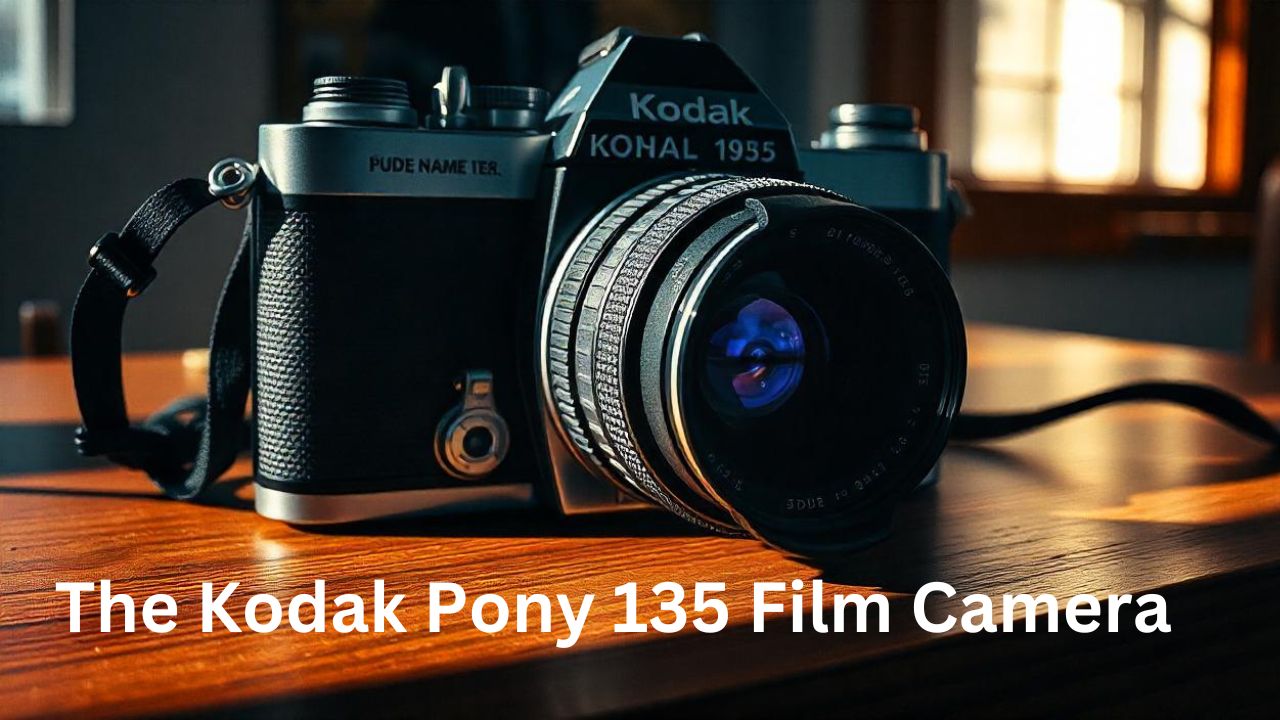
Film photography continues to attract enthusiasts, especially those who appreciate the history behind classic cameras. The Kodak Pony 135 film camera remains a popular choice among collectors and photographers seeking an authentic vintage experience. This lightweight, easy-to-use model captured the imagination of hobbyists and professionals alike when it debuted. It might lack the digital precision of modern cameras, but its analog charm is hard to beat. In this guide, we explore everything that makes the Kodak Pony 135 such a beloved piece of photographic history.
Introduction to the Kodak Pony 135 Film Camera
The Kodak Pony 135, first introduced in the 1950s, played a pivotal role in popularizing 35mm photography. It brought quality imaging to the masses at an affordable price. Its design emphasized simplicity, making it ideal for casual photographers who wanted a straightforward camera without sacrificing image quality. This model marked a significant point in Kodak’s legacy, showing that excellent craftsmanship need not come with complexity.
History and Development of the Kodak Pony Series
Kodak designed the Pony series during a time when film photography was experiencing rapid growth. Kodak focused on creating cameras that allowed everyone, regardless of skill level, to capture moments on film. Released in 1950, the Pony 135 quickly gained recognition for its reliable performance. It became the go-to camera for families, travelers, and amateur photographers. With its durable build and easy-to-understand operation, the Pony 135 remained in production for over a decade.
Features That Defined the Kodak Pony 135
The Kodak Pony 135 film camera came equipped with various features that set it apart in its era. It included a coated 51mm f/4.5 lens, offering sharpness across a range of lighting conditions. Unlike today’s automatic models, users needed to manually set aperture and shutter speeds. This hands-on approach taught budding photographers how to control exposure effectively. Additionally, the Pony 135 used 35mm film, which was both affordable and widely available. This combination of features provided users with the flexibility to experiment and learn.
Understanding the Lens and Optics
One of the standout features of the Kodak Pony 135 lies in its lens. The 51mm Anastar lens provided a focal length perfect for portraiture and general photography. It offered a maximum aperture of f/4.5, which allowed users to shoot in various lighting conditions. The lens’ coated optics helped reduce glare and increase color saturation, resulting in vivid and life-like images. For those seeking to capture detailed, nostalgic photographs, this lens delivered beautifully.
Film Loading and Handling
Unlike the automatic film-loading systems of today, the Kodak Pony 135 required users to manually load the film. You had to pull the film leader across the back of the camera and secure it in the take-up spool. It might seem cumbersome, but enthusiasts argue that this manual process enhances the connection between the photographer and their craft. After all, handling film requires patience and precision, something digital photography often bypasses.
Shutter Speeds and Exposure Control
The Kodak Pony 135 offered several shutter speed options, ranging from 1/25 to 1/200 of a second. This range allowed users to capture motion effectively or freeze a moment in time with precision. Photographers needed to adjust the shutter speed manually, which often led to a deeper understanding of how different settings impact the final image. Using the camera in varying light conditions without an integrated light meter required skill, but it also taught users to trust their instincts.
Focusing Mechanism and Depth of Field
This camera featured a scale focusing system, which meant users had to estimate the distance to their subject. The engraved distance scale on the lens barrel served as a guide for adjusting focus. Though not as precise as modern autofocus systems, this technique honed the photographer’s judgment. The process might appear tricky to beginners, but it contributed to creating photos with a beautiful depth of field. Many photographers enjoy the slight imperfections, considering them as part of the film photography charm.
Capturing Vibrant Colors on Kodak Pony 135 Film
Film photographers often rave about the richness of colors captured on the Kodak Pony 135. The combination of its Anastar lens and 35mm film resulted in vibrant hues that digital cameras sometimes struggle to replicate. Whether you’re shooting landscapes, portraits, or street photography, the Pony 135 delivers colors with a distinct warmth and natural feel. When paired with classic Kodak Gold 200 film, this camera excels in daylight, producing timeless and evocative photographs.
Building a Vintage Camera Collection with the Kodak Pony 135
Collectors of vintage cameras often prioritize models like the Kodak Pony 135 due to their historical value and functional design. These cameras remain highly sought after in second-hand markets, especially in good working condition. The robust build and enduring materials ensure that, with proper care, these cameras can function long after modern digital cameras become obsolete. Collectors often appreciate the Pony 135 for its balance of simplicity and photographic quality.
Film Options for the Kodak Pony 135
Choosing the right film plays a crucial role in maximizing the performance of the Kodak Pony 135. Black and white films like Ilford HP5 work wonderfully for classic street scenes, while color films like Kodak Portra 400 excel in portraiture. The flexibility of 35mm film allows photographers to experiment with various film stocks to achieve different moods and styles. Each roll produces unique results, encouraging experimentation and creativity.
Maintaining and Repairing the Kodak Pony 135
Keeping a vintage camera like the Kodak Pony 135 in good shape requires regular maintenance. Dust and moisture can damage the internal components, so storing it in a dry place is essential. Fortunately, the camera’s mechanical simplicity allows for straightforward repairs. If a part needs replacement, many camera repair shops can service it using readily available parts. For DIY enthusiasts, online forums and guides provide instructions on disassembling and repairing these classics.
Why Film Photography Remains Relevant Today
In an age dominated by smartphones and digital SLRs, why do photographers still reach for a Kodak Pony 135 film camera? The answer often lies in the nostalgia and craftsmanship that film photography offers. Shooting with film requires a more deliberate process, which slows you down and makes you consider every shot. The anticipation of waiting for your film to develop brings a unique thrill. This tangible connection with your work contrasts sharply with the instant gratification of digital photography.
The Return of 35mm Film in Modern Times
Interestingly, recent years have seen a resurgence in the popularity of 35mm film. Photographers from younger generations embrace analog photography as a creative challenge. The imperfections and unique characteristics of film make it a refreshing alternative to digital images. Furthermore, Vintage cameras like the Kodak Pony 135 offer an affordable entry point into this world, allowing people to experience photography in its purest form.
Tips for Shooting with the Kodak Pony 135 Film Camera
To get the best results with your Kodak Pony 135, consider the following tips. Always set your exposure manually to match the lighting conditions of your scene. Practice estimating distances to sharpen your focusing skills. And, of course, experiment with different film stocks to see which produces the aesthetic you desire. This camera rewards patience and experimentation, making it a fantastic tool for both novices and seasoned photographers.
Conclusion: Rediscovering the Joy of Analog Photography
The Kodak Pony 135 film camera holds a special place in the hearts of many film enthusiasts. Its simplicity, reliability, and ability to produce beautiful images have made it an enduring favorite. Despite the digital age’s convenience, many photographers still appreciate the artistry that comes with shooting on film. Furthermore, For those interested in exploring vintage photography, the Kodak Pony 135 offers a delightful journey into a bygone era. Whether you’re a collector or a photographer eager to try something different, this camera remains a worthy investment.
Frequently Asked Questions
What type of film does the Kodak Pony 135 use?
The Kodak Pony 135 uses standard 35mm film, which remains widely available in both black-and-white and color options.
Is the Kodak Pony 135 a good camera for beginners?
Yes, its straightforward controls and sturdy design make it a great camera for beginners to learn manual photography.
How do I load film into the Kodak Pony 135?
Pull the film leader across the camera’s back, attach it to the take-up spool, and advance the film.
Can I repair my Kodak Pony 135 at home?
Yes, many minor repairs can be done at home using online guides, although professionals handle more complex issues.
What kind of photos can I take with the Kodak Pony 135?
You can capture stunning portraits, landscapes, and street photography with rich, vintage tones characteristic of film.
Why do photographers still use film cameras like the Kodak Pony 135?
Film cameras offer a tactile, creative experience that digital cameras cannot replicate. It’s about the process, not just the results.
Film Streaming
The Fascination Behind the First Syllable of a Rhyming Film Genre NYT
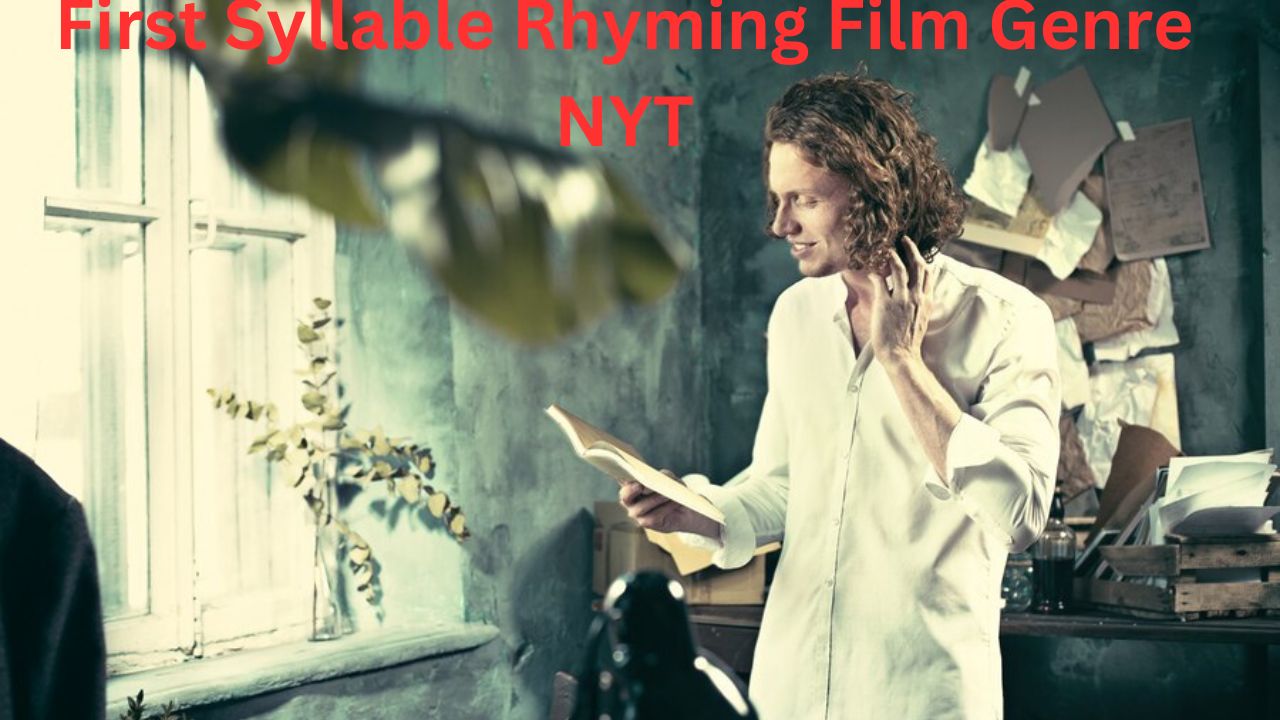
The Fascination Behind the First Syllable of a Rhyming Film Genre NYT. In recent years, the New York Times (NYT) and popular media have seen a surge in interest regarding a unique form of film categorization. This focus, often referred to as the first syllable of a rhyming film genre, captures attention through its playful yet memorable titles. It appeals to both viewers and industry insiders by offering a fresh, catchy approach to genre classification. But what makes this style so compelling, and why does it resonate with audiences and creatives alike?
Rhyming film genres hold a particular charm because they engage audiences with wordplay and evoke curiosity. This article delves into the world of rhyming film genres, exploring how filmmakers use them to entertain and intrigue. Let’s uncover why the first syllable of a rhyming film genre matters and examine some iconic examples that define this quirky yet captivating category.
The Rise of Rhyming Film Genres in Popular Culture
Rhyming film genres emerged as an appealing way to package films with descriptive, catchy titles. In an industry where standing out matters, such classifications play a pivotal role. When a genre rhymes, it becomes easy to remember and share, creating a strong recall value among audiences. Think of “slasher bash” or “heist delight.” The NYT has highlighted this genre trend as filmmakers capitalize on wordplay to make their titles unforgettable.
With rhyming film genres, audiences can anticipate the tone or theme before watching. If a title rhymes, it often promises fun, energy, or a creative twist. In a crowded market, these genres help filmmakers connect with viewers on a personal level by tapping into familiar language rhythms.
Why Filmmakers Embrace Rhyming Genres
Directors and producers leverage rhyming film genres to communicate themes with minimal words. For instance, the genre “thriller-chiller” instantly sets expectations. With one phrase, the title implies suspense, horror, and excitement. Filmmakers understand the power of a name; a rhyming genre can become the calling card of a film’s brand. Moreover, these genres often suggest lightheartedness or a playful approach, drawing in viewers who seek entertainment.
Rhyming genres also allow creative liberty within storytelling. The name shapes the viewer’s imagination, setting the stage for the type of humor, horror, or drama they can expect. In many cases, these names offer subtle hints about the plot. A title like “rom-com bomb” suggests a romance-comedy with a twist, intriguing audiences from the get-go.
Examples of Popular Rhyming Film Genres in Cinema
Exploring rhyming film genres reveals several memorable examples that have charmed audiences:
- Slasher Basher: Known for blood-pumping, suspense-filled scenes, this genre includes iconic films with intense chases and shocking twists. Movies like Scream and Halloween fall into this genre, thrilling audiences with edge-of-the-seat experiences.
- Heist Delight: Films centered around elaborate robberies and high-stakes plans. Movies like Ocean’s Eleven and The Italian Job blend suspense with creativity, allowing viewers to root for characters executing bold schemes.
- Rom-Com Bomb: In this genre, romance meets humor, with characters facing hilarious trials and heartwarming connections. Notting Hill and 10 Things I Hate About You exemplify the quirky charm that defines this genre.
- Space Chase: Sci-fi films that take audiences on intergalactic adventures, like Star Wars or Guardians of the Galaxy, fit this genre. These films promise action-packed scenes and imaginative, far-out worlds.
Each of these genres uses rhyme to encapsulate its essence, making the genre itself part of the movie’s appeal. This clever approach also helps in marketing, giving the audience a preview of what to expect with just a few words.
The Impact of Rhyming Genres on Viewership
Rhyming film genres create a psychological impact on viewers, often making titles stick in their minds. The alliteration or rhyme scheme catches attention quickly, offering a snapshot of the film’s vibe. This clever technique attracts potential viewers by giving them a reason to choose one movie over another.
When audiences see titles like “Space Chase” or “Slasher Basher,” they quickly form an impression of the film. Rhyme schemes play on the mind’s ability to connect familiar sounds, making genres not only easy to recall but also enjoyable to discuss. People can easily recommend these genres, adding a layer of conversational marketing that benefits the film industry.
Challenges in Creating Effective Rhyming Genres
While rhyming genres add flair, creating effective names poses its own challenges. A title should balance cleverness with clarity, ensuring viewers understand the genre’s core without confusion. Not every film theme lends itself to rhyme, and forced attempts can feel unnatural or gimmicky. Filmmakers must think creatively to devise names that rhyme and resonate with audiences.
Another consideration is global reach. Rhyming genres often work best in English due to the language’s flexibility with compound words. Translating these rhyming titles into other languages may lose the rhyme and rhythm that make them memorable. Filmmakers aiming for international audiences must weigh the impact of translation on their rhyming genre’s appeal.
Rhyming Genres and Their Role in Film Marketing
Marketing a movie involves numerous strategies, from trailers to posters, and a rhyming genre name can amplify these efforts. By coining a memorable genre title, producers generate initial buzz that resonates through word of mouth. For example, audiences might feel drawn to watch a “heist delight” film just from the catchy genre title.
Rhyming titles simplify promotion, and audiences can easily recall and recommend these films to others. This ease of recall plays a vital role in the film’s success, as titles circulate quickly on social media and in conversations. For streaming platforms, rhyming genres also make films stand out in vast catalogs, helping viewers identify intriguing options in seconds.
Rhyming Film Genres as a Trend in Modern Media
The NYT often covers shifts in pop culture, highlighting new trends in film and entertainment. Rhyming film genres represent an evolution in genre categorization, reflecting the audience’s love for playful, expressive titles. Filmmakers experiment with language, matching the creativity of their titles to the creativity of their stories.
This trend mirrors a broader shift towards unique branding in the media. Consumers now seek originality, making rhyming genres an effective tool for engagement. Viewers connect emotionally with these titles, perceiving them as authentic and enjoyable rather than overly serious. Thus, rhyming genres stand as a testament to the growing demand for inventive and accessible cinema.
Examples of Rhyming Film Genres Across Different Media Types
Aside from movies, rhyming genres influence other media. Television shows, web series, and even books experiment with these catchy labels. A few examples include:
- Crime Time: Television crime dramas, like True Detective or Mindhunter, that delve into criminal psychology and investigative thrillers.
- Fantasy Frenzy: Fantasy-themed shows and films that offer epic quests and magical worlds, such as Game of Thrones or Harry Potter.
- Zombie Rom-Com: Blending horror and romance, films like Warm Bodies showcase unexpected love stories within the zombie genre.
- The Fascination Behind the First Syllable of a Rhyming Film Genre NYT
Moreover, These rhyming labels transfer well to various formats, showing their versatility and potential for cross-media use. Audiences recognize and respond to these creative genre names, creating shared language for fans across platforms.
Future of Rhyming Genres: Innovation or Fad?
Will rhyming genres continue shaping media, or will they fade as a quirky fad? Considering their popularity and effectiveness, they may remain a staple in cinema’s evolving language. The creativity behind these names aligns with the demand for innovative storytelling and fresh approaches to film classification. As long as filmmakers find ways to reimagine genres and captivate audiences, rhyming titles may thrive in pop culture.
However, repetition can dilute their charm if overused. Filmmakers need to use rhyming genres strategically, ensuring each title feels genuine rather than contrived. When used thoughtfully, these genres not only attract viewers but also build an emotional connection that fosters long-term loyalty.
Conclusion
Rhyming film genres, like slasher basher or heist delight, tap into audiences’ desire for fun, memorable experiences. This unique approach transforms a simple genre name into a powerful marketing tool. From the rise of rom-com bomb to space chase, these rhyming genres leave an indelible mark in cinema history.
Furthermore, With the right balance of creativity and relevance, filmmakers can continue using rhyming genres to captivate audiences and celebrate the art of storytelling. As these genres evolve, they remain a playful and enduring symbol of cinema’s limitless imagination, proving that sometimes, it all starts with the first syllable.
The Fascination Behind the First Syllable of a Rhyming Film Genre NYT
FAQs
What is the first syllable of a rhyming film genre?
The first syllable in a rhyming film genre refers to how the genre name begins, setting up a rhythmic or catchy rhyme for the entire phrase. For instance, in the genre slasher basher, “slash” starts the rhyme, drawing attention to the thrilling theme.
Why are rhyming film genres popular in media?
Rhyming film genres grab attention because they’re catchy and easy to remember. Titles like heist delight or rom-com bomb create instant appeal, helping viewers quickly understand the film’s tone. This simplicity makes these genres popular among both filmmakers and audiences.
Do rhyming genres impact film marketing?
Absolutely! Rhyming genres add a unique twist to marketing efforts. For example, a title like crime time sticks in the viewer’s mind, making it easier to recall and recommend. Consequently, these titles help films stand out on streaming platforms and social media.
Are rhyming film genres common across all languages?
Not quite. Rhyming film genres work best in English, as this language provides more flexibility for creating catchy compound words. Translating them into other languages can often disrupt the rhyme, which may lessen the appeal in international markets.
Can rhyming genres limit creative freedom?
While rhyming genres add flair, they can sometimes feel restrictive. Filmmakers may feel confined to certain themes or tones, especially if they feel pressured to follow the rhyme. However, when used thoughtfully, these genres can inspire creativity rather than limit it.
Will rhyming genres remain popular in the future?
This depends on audience tastes. As long as viewers enjoy playful and catchy titles, rhyming genres will likely stay relevant. Nonetheless, filmmakers need to innovate continuously to keep these titles feeling fresh and engaging over time.
The Fascination Behind the First Syllable of a Rhyming Film Genre NYT
-

 Film Streaming9 months ago
Film Streaming9 months agoStreaming Film VF: Your Gateway to French Cinema
-

 Film11 months ago
Film11 months agoUnveiling the Magic: Exploring the Art of Film Techniques
-

 Film9 months ago
Film9 months agodG9ERgG-deadpool-2
-
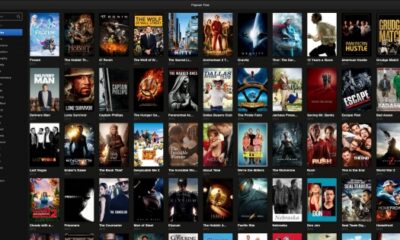
 Film Streaming10 months ago
Film Streaming10 months agoFilm Streaming vs Cinema Experience: Which Offers a Better Movie Viewing Experience?
-

 Film Streaming9 months ago
Film Streaming9 months agosuicide squad streaming
-

 Film Streaming9 months ago
Film Streaming9 months agoles animaux fantastiques 2 streaming
-

 Film Streaming9 months ago
Film Streaming9 months agoFilm VF Streaming: Your Gateway to French Cinema
-
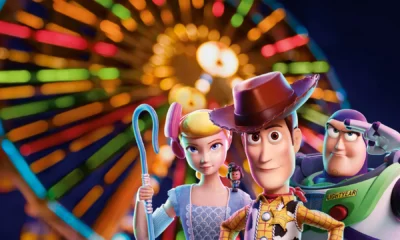
 Film Streaming9 months ago
Film Streaming9 months agoToy Story 4 streaming
